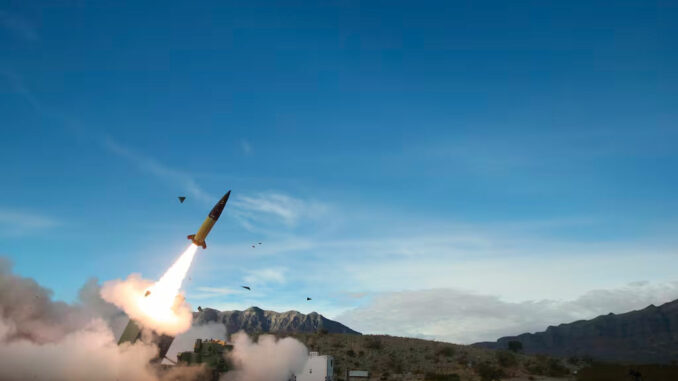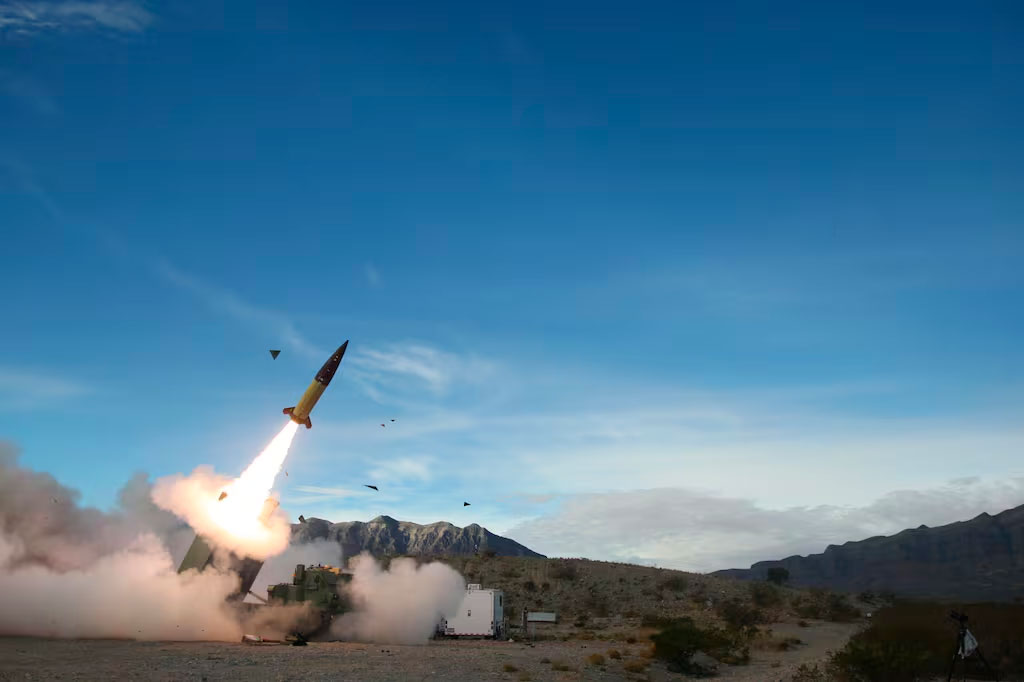
Ukraine is asking to step up its strikes on Russia using long-range weapons supplied by the United States. Analysis of the strategic stakes.
Ukraine is seeking to strengthen its ability to strike targets deep inside Russia to disrupt military infrastructure and weaken the Russian army. Despite the support of the United States, notably through the supply of JSOW bombs, Ukraine wishes to obtain ATACMS missiles, capable of striking over 300 km away. However, this decision involves political and military risks, including Russian nuclear threats and the possibility of missiles missing their target. The technological innovation of Ukrainian drones has already enabled bold strikes, but more powerful strike capabilities remain essential to compensate for the arms deficit.
The importance of long-range strikes for Ukraine
Since the start of the conflict in 2022, Ukraine has demonstrated impressive resilience and adaptability. However, to contain the Russian army and retaliate effectively, Kiev needs long-range strike capabilities. Currently, Ukraine uses drones to disrupt Russian infrastructure in the south and west of the country, but this is not enough to ensure constant and significant pressure. That’s why Ukrainian President Volodymyr Zelenskyy, during his visit to the White House in September 2023, called for the supply of long-range missiles such as ATACMS.
ATACMS (Army Tactical Missile System) missiles, manufactured in the USA, are capable of striking targets up to 300 km away, enabling Ukraine to target strategic positions in the heart of Russia, where its drones cannot operate. Although the United States has promised to supply short-range JSOW bombs, capable of hitting targets around 100 km away, this remains insufficient to offset the military imbalances. For the time being, Washington remains cautious about granting ATACMS, as these missiles could lead to a significant escalation of the conflict.
To illustrate the importance of these long-range strikes, the destruction of a weapons depot in the Tver region, 480 km from Ukraine, was one of Kiev’s most successful strikes, albeit carried out with drones. ATACMS would enable Ukraine to carry out this type of operation more systematically, striking moving or hard-to-reach targets.
The political and military risks of a nuclear escalation
Kiev’s repeated demands for long-range missiles are raising concerns not only among Western allies, but also among Vladimir Putin, who has already threatened a nuclear response in the event of an attack on Russia. This rhetoric is familiar to the Kremlin, but not to be taken lightly. On September 25, 2023, the Russian president warned of a “nuclear response” if a state backed by a nuclear power attacked Russia. This statement was explicitly aimed at the USA, which has already supplied heavy weapons to Ukraine.
Although the probability of a nuclear response is low, the risks do exist. Military analysts point out that Russian doctrine relies less on the ability to wage nuclear war, and more on the use of threats to deter Western powers. Moreover, China and India, through their leaders Xi Jinping and Narendra Modi, have already urged Putin to avoid any nuclear escalation. These international pressures make it unlikely that Russia will use nuclear weapons.
Moreover, the use of advanced American missiles such as the JASSM (Joint Air-to-Surface Standoff Missile) poses another problem: in the event of failure or poor destruction of the weapon, Russia or China could recover debris and analyze the stealth technology used, thus compromising sensitive information on Western military capabilities. This raises questions about the real benefits of such assistance.

Ukraine’s technological innovations: drones and missiles
One of the strengths of the Ukrainian army in this conflict is its capacity for technological innovation. Thanks to its drones, Ukraine has been able to carry out daring and spectacular strikes, often exceeding the capabilities expected of an army under pressure. The use of over 100 drones in the attack on the Tver region in September 2023 is a striking example. Ukrainian drones are capable of flying hundreds of kilometers, sometimes bypassing Russian air defenses.
President Zelenskyy also announced the deployment of the Palianytsia drone missile, an innovation of Ukrainian military industry, capable of striking targets with increased speed and precision. Although these innovations have surprised many military observers, they are not enough to compensate for the lack of long-range missiles such as ATACMS.
Ukrainian technological innovation has inflicted significant damage on Russian infrastructure, notably by destroying part of the Black Sea fleet and hitting arms depots in the occupied territories. However, ATACMS missiles, with their 300 km range and ability to strike mobile targets, would offer Ukraine a decisive advantage. Complementing UAVs, these weapons could further weaken Russian forces by disrupting their supply lines and targeting critical infrastructure.
Western support: opportunities and challenges
Western support, particularly from the United States, remains essential if Ukraine is to continue its strikes on Russian territory. However, this support is limited. While the US Congress and some members of the European Parliament are in favor of supplying long-range missiles, others fear an uncontrollable escalation of the conflict. Debates within NATO and European institutions show that there are still political reservations about direct Western military involvement.
In June 2023, the USA allowed Ukraine to strike certain targets in Russia with ATACMS, but only as part of the defense against Russian forces engaged in attacks. This enabled Kiev to strike military infrastructure in Crimea and other occupied areas. Despite this, Washington remains reluctant to supply additional missiles, especially for strikes in mainland Russia.
Meanwhile, the supply of AMRAAM missiles to equip Ukraine’s F-16s promises to boost Kiev’s air defense capabilities. These missiles, which can intercept aircraft before they drop their bombs, are a valuable aid, but they will not replace the long-range strike capability Ukraine needs to weaken Russian positions.
War Wings Daily is an independant magazine.